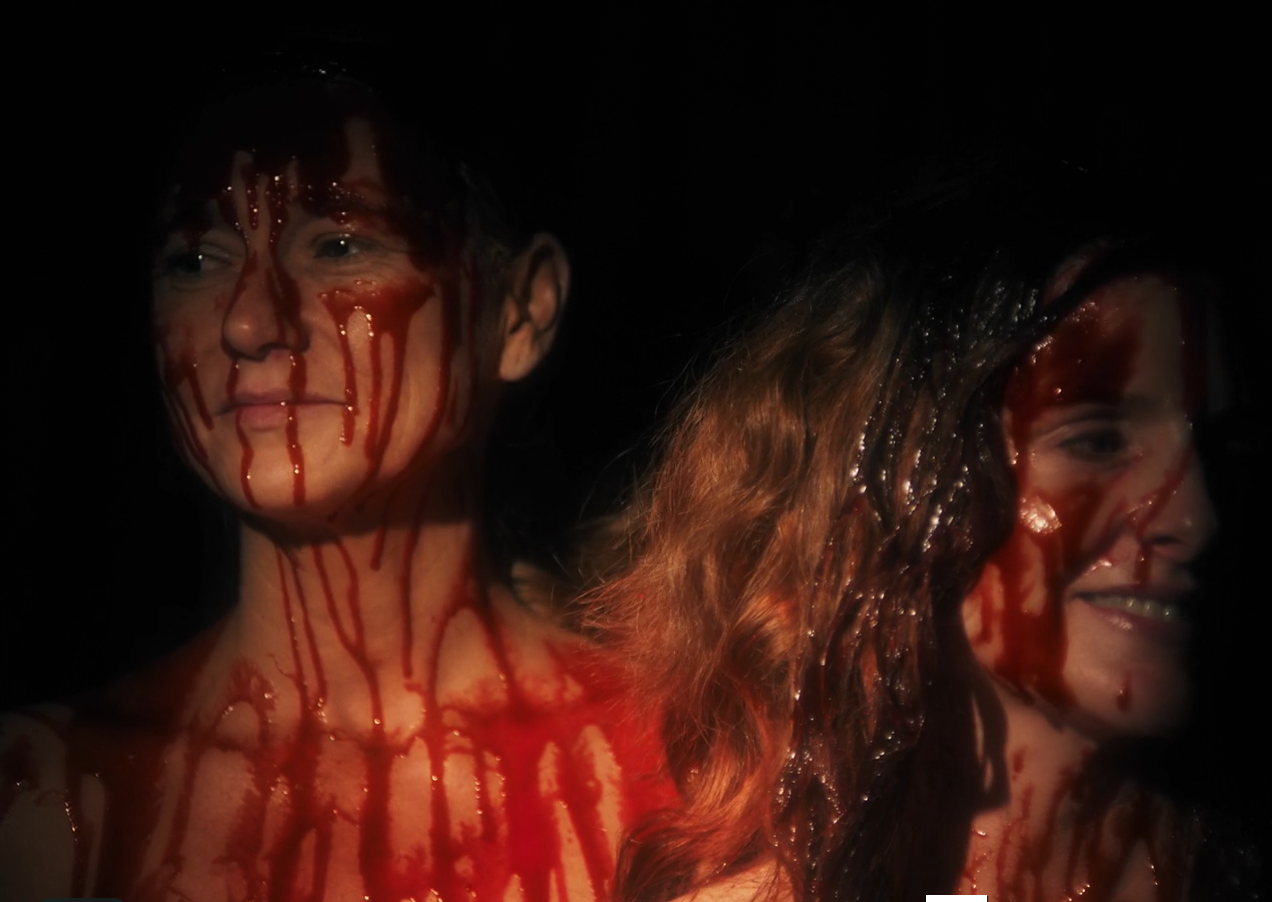 CLIMATE OF THE HUNTER (2019)
CLIMATE OF THE HUNTER (2019)
Starring: Ginger Gilmartin, Mary Buss, Ben Hall, Laurie Cummings
Director: Mickey Reece
Writers: Mickey Reece, John Selvidge
Every year I scan film festival programs to get a taste of upcoming, interesting films. Thanks to DIS/MEMBER, this year, I am able to virtually attend the prestigious Fantasia International Film Festival, the source of many favorite titles, to review a couple of films. While (too) many films piqued my interests, I had to settle for only a few. My first choice is Oklahoma independent writer and director Micky Reece’s Climate of the Hunter (2019).
At first look, Climate of the Hunter appears to be a simple story of aging sisters vying for the attention and affections of a suave, erudite and urbane visitor who may be a vampire. However, it is an intriguing puzzle, providing the opportunity to solve it in many ways.
While most horror fans find vampires intriguing, it is worth noting some salient points that reflected greatly on my choice to review Climate of the Hunter. Because of the nature of their blood lust for humans, vampires can be endlessly attractive like the sweet scent carnivorous plants exude to lure unwary insects into their maw. Sometimes people want to be wanted even if it is a bad choice. Vampires are repulsive because their propagation is like a disease moving through a population.
As recently as the 1890s, vampires were blamed as the source of as yet undiagnosed illnesses sweeping through populated areas. Vampires are human-shaped viruses, taking over host cells and converting them into fellow, blood-seeking creatures. People who want to undergo that transformation exhibit a unique form of pleasure-seeking narcissism. Not only can a successful vampire far outlive its friends and family, but it may also choose to consume them first. Destroying any humans that have any emotional connection to the vampire helps extinguish any remaining glow of humanity left within them.
To explore these ideas, Reese assembles his cast in an isolated, off-season summer resort. Sisters Alma (Ginger Gilmartin) and Elizabeth (Mary Buss) anxiously await the return of childhood friend Wesley (Ben Hall). Wesley was once an object of desire and a source of contention between the sisters. Alma has been living full time at the resort since her divorce. She fills her days with getting high and working on her sculptures, in denial of her decaying mental health. Elizabeth is a workaholic lawyer on the edge of spinsterhood.
Wesley, an erudite expatriate capable of quoting long passages of Goethe and Baudelaire, has recently returned to America to care for Genevieve (Laurie Cummings), his ailing wife, and to write. He is simultaneously ingratiatingly charming and unapologetically self-centered. It is his arrival that creates the sparks that threaten to set off the well-stocked tinderbox of sibling rivalry between Alma and Elizabeth. Instead of a battle between humans and a supernatural entity, the fiercest struggles take place in the hearts and minds of the two sisters as they passive-aggressively snip and snipe at each other.

Climate of the Hunter playfully creates a kitschy vision of the world in the 1970s. All meals are highlighted by voice-over descriptions and accompanying photographs of weird dishes taken from ads in Women’s magazines such as Crown of Frankfurters with Baked Potato Soup.
But the time-capsule references go beyond the garish and draw connection to older vampire films such as Jean Rollin’s Rape of the Vampire and Harry Kümel’s Daughter’s of Darkness. Much like The Countess Elizabeth Báthory (Delphine Seyrig) in Daughter of Darkness, Wesley finds himself staying in a nearly deserted, off-season vacation spot. His wife(Laurie Cummings) appears wearing a slinky, shiny dress similar to the one worn by the countess. The title music of Tod Browning’s 1931 Dracula, from Tchaikovsky’s Swan Lake, is ambient music during one of several meal scenes in Climate of the Hunter.
The style and quality of language change abruptly during the movie. There are moments when the witty banter and sometimes uncomfortably piercing dialogue is replaced with curiously stilted, almost comedic exchanges that recalls soap operas (ABC’s long-running horror/soap Dark Shadows springs to mind). These scenes smack of a certain otherness from the rest of the carefully crafted dialog in the film. It is as if one of the characters is imaging a conversation taking place out of their presence.
This adds an eerie, disorienting quality to the Climate of the Hunter. The viewer is confronted with the idea that the unfolding story is told from the perspective of a hidden, unreliable narrator. This is also the moment when the film sheds its melodramatic disguise and begins to reveal its hidden parts. Reese has constructed a movie that is a puzzle whose pieces are uniform shape, forcing the audience to assemble the picture through context clues. It is the movie equivalent of a choose your own adventure book.

Mary Busse, as Elizabeth, does an excellent job making a brittle and hard to like character appear vulnerable underneath her lacquered hair and fortress-like outfits. Similarly, Ginger Gilmartin and Ben Hall, as Alma and Wesley, bring multilayered performances as a woman who may be a vampire hunter or someone descending into madness and the man who may be a vampire or carousing, philandering dilettante trying to cheat on his ill wife.
Although the Climate of the Hunter makes it to mystery, madness, and murder, the mayhem aspect is kept to a minimum. Instead, it is an intriguing and well-written film whose many flavors reveal themselves like the complex aftertaste of fine food. The writing and performances are superlative. Climate of the Hunter uses the idea of vampires as by-products of our motives and the choices we make to persevere and protect what is valuable. All of this and much more makes Climate of the Hunter a joy to watch.
Check out the trailer here.



[…] 1) Climate of the Hunter (2019) – First Time Watch! My first Fantasia International Film Festival movie! Thank you, DIS/MEMBER! Read my review here. […]